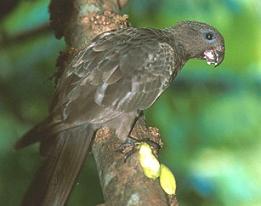Island Conservation-The bones of the past |30 January 2006

Then last October, a Dutch-Mauritian team set out to try to recreate the prehistoric environment in which the Dodo thrived and uncovered a mass graveyard in a marshy corner of a sugar plantation.
"It was amazing," said one of the team, "I had the feeling we were finding one every ten minutes!"
Now if only we could do that in Seychelles, too? It is much more difficult in the main islands of Seychelles than on Mauritius to find ancient remains as granite is acidic and bones quickly vanish over time. However, perhaps deep in the marshes somewhere there are secrets waiting to be discovered. Certainly, in the coral islands there will be remains of birds that lived in Seychelles long before Vasco da Gama rounded the Cape of Good Hope.
Take Farquhar, for example. A friend at the UK Natural History Museum recently sent to me an article from an 1896 edition of The Field – the Country Gentleman's Newspaper – that he had come across. It was anonymous, but I was able to tell my friend that in fact the author must have been Admiral Kennedy, who visited in 1895. Kennedy went to Farquhar and gives us an insight into what the island was like. Among other things, he says there were parrots and wild pigeons there.
The reference to parrots is particularly intriguing. Were they black parrots like on Praslin? The kato nwar's ancestors came from Madagascar, so perhaps Farquhar was a stepping stone on their way to the Vallée de Mai? This is quite possible but frustratingly, Kennedy leaves us with no description.
All is not lost. A museum expedition to Farquhar may well be able to find the bones of these parrots and pigeons. Perhaps they were of species that still survive in Seychelles or Madagascar.
If so, perhaps we can turn the clock back to recreate the prehistoric environment of Farquhar in which they lived, then reintroduce them.
Much has been done in the granitic islands to repair the damage of the past. Some islands, notably Aride, Cousin and Cousine are now, we think, quite close to what they were like before humans arrived. Yet next to nothing has been done in the outer islands.
Eyes are now turning to these islands and soon the first steps will be taken to reverse the damage done over the last two centuries. It would be particularly exciting if part of that process involved bringing back the nearest equivalent of the extinct birds that used to occur on the islands.
The first problem is to discover what exactly used to be there and there may be a few surprises in store along the way to rival the tale of the Dodo.
by Adrian Skerrett




